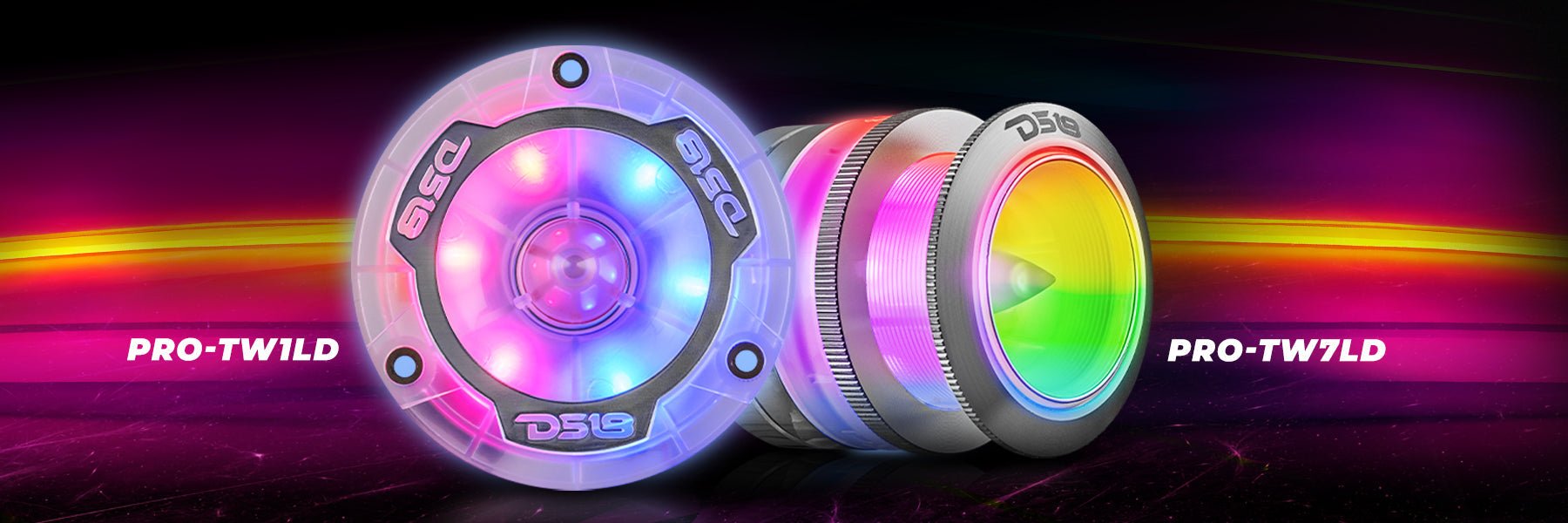If your amplifier stops working, it can disrupt your entire sound system. God forbid it happens at a competition or during a demo, a malfunctioning amplifier can ruin your entire experience. This guide is here to help you diagnose and resolve common amplifier issues so you can get LOUD again in no time!

Common Symptoms of a Faulty Amplifier
Let’s start with some typical symptoms that indicate your amplifier may need troubleshooting:
1. No Sound at All
If your amplifier powers on but you’re getting no sound, it’s almost always a signal chain issue—typically a bad RCA connection, misconfigured head unit output, or a speaker wiring fault.
2. Sound Distortion or Static
Distorted sound or static is a clear red flag—usually pointing to a failing ground connection, damaged RCA cables, or internal amp component failure.
3. Amplifier Won’t Power On
If your amp won’t power on, it’s almost always a power delivery problem—think blown fuse, bad ground, corroded terminals, or even a weak battery.
4. Protect Mode Light Stays On
Protection mode isn’t just a warning—it’s your amp’s last line of defense. If the protect light stays on, it’s signaling thermal overload, a shorted output, or impedance mismatch. Diagnose it immediately or risk permanent damage.
5. Amplifier Powers On But Cuts Out
If your amp powers on but cuts out mid-operation, you’re likely dealing with thermal shutdown, voltage drop, or a shorted load.
6. One Channel Isn’t Working
If one channel is dead, start by swapping speakers and RCAs to isolate the issue. It’s often a bad speaker, damaged RCA lead, or an internal amp channel failure. Don’t overlook balance/fade settings on the head unit either.
7. Excessive Heat or Burning Smell
Excessive heat or any burning smell from your amp is a serious red flag—shut it down immediately. This often signals internal component failure, poor grounding, or blocked ventilation. Continued use could result in total amp failure or fire risk.
Step-by-Step Amplifier Troubleshooting Checklist
1. Visual Inspection: Start Simple
Begin with a hands-on check of your amp and wiring:
· Check for Frayed or Loose Wires: Look for any signs of wear or damage in the wiring. Frayed wires can cause short circuits or signal loss.
· Inspect the Amp Casing: Burn marks or bloating may indicate overheating or internal failure.
· Moisture Exposure: Especially in marine setups—moisture or corrosion can kill an amp fast.
2. Power Delivery: Verify Voltage
Confirm your amp is getting clean, reliable power:
· 12V Constant from Battery: Use a multimeter to check that the voltage is between 12 and 14.4V.
· Remote Turn-On Wire: Should show 11–14V when the head unit is on.
· Ground Wire: Must be less than 18" and connected to bare metal. Use a resistance check.
· Fuse Check: Inspect both the inline and onboard amp fuses.
3. Protect Mode: Why It’s Red-Light City
If the protect light is on, the amp is shutting down to prevent damage:
· Thermal Protection: Check for blocked ventilation or overheating conditions.
· Shorted Speaker Wires: Look for pinched or grounded wires.
· Impedance Mismatch: Make sure speaker ohms match amp specs.
4. Speaker Issues
Speakers or wiring can mimic amp issues:
· Test Each Speaker: Use a 9V battery to “pop” test each speaker—no sound = bad speaker.
· Check Speaker Wiring: Check for frayed, grounded, or disconnected speaker wires.
5. Head Unit: The Brain Of The System
No signal from the head unit = no output:
· Swap in a Known-Good Source: Bypass the current head unit temporarily.
· Balance and Fade Settings: Check that audio isn’t accidentally shifted left/right or front/rear.
· Amplifier Gain Settings: Gains set too low = weak or no sound.
6. RCAs & Signal Path: Critical Connectors
Don’t underestimate your cables—they make or break signal flow:
· Test for Signal: Use a voltmeter to check for signal at the RCA outputs.
· Wiggle Test: Lightly move cables to identify loose or intermittent connections.
· Try Known-Working RCA Cables: Try a known-good set of RCA cables.
7. Load Testing with Multimeter: Smart Diagnostics
Use your multimeter to validate the entire circuit:
· Ohm Test: Disconnect speakers and test resistance to confirm healthy loads.
· Voltage Drop Test: Measure battery voltage during engine crank; dips under load may kill amp power.
· Continuity Tests: Ensure ground and speaker wires aren’t broken or compromised.
8. Amp-Specific Tests
Dial in on your amplifier’s features:
· Check Gain, Crossover, and Bass Boost Settings: Misconfigured settings can cause signal issues or distortion.
· Reset Digital DSP Settings: For digital amps, a reset may resolve erratic behavior.
· Marine/Powersports Considerations: Look for salt corrosion or water-intrusion on waterproof connectors.
9. Location Matters
Where and how you install your amp affects performance:
· Ventilation: Never mount on carpet or inside sealed enclosures.
· Avoid Direct Sunlight: Keep out of direct sunlight or hot compartments.
· Cooling Solutions: Use fans in high-wattage systems to prevent thermal shutoff.

It’s Not Always the Amp!
Even when your amp checks out, other system components can sabotage your audio. Here’s what to look at next:
Alternator & Voltage Drop
If you experience under-voltage during heavy bass drops, it’s time to check your alternator.
· Alternator Health: Make sure it’s putting out enough voltage and amps to support your system.
· Capacitor Installation: A properly sized capacitor helps buffer sudden voltage drops and keeps your amp stable under peak load.
Ground Loops & Noise
If your system makes a high-pitched whine that rises with your RPMs:
· Identifying Ground Loops: It’s likely caused by grounding discrepancies between components.
· Install a Ground Loop Isolator: Or reroute RCA cables away from power wires to reduce interference and noise.
Remote Turn-On Delay
Some amps produce an annoying pop when turning on—this can be fixed:
· Add a Delay Module: A simple relay or timed turn-on module can sequence power-on cleanly.
· Check Head Unit Settings: Some modern head units offer built-in delay settings—enable these if available.
Preventative Tips to Avoid Amp Failure
Taking proactive measures can help prevent amplifier issues down the line:
· Fuse Both Ends of Power Wire: Always fuse the power wire near the battery and at the amplifier.
· Mount on a Solid Surface: Ensure your amplifier is securely mounted away from water and moisture.
· Correct Gauge Wiring: Use appropriately rated wiring to avoid overheating and potential fire hazards.
· Monitor Voltage: Consider investing in a voltmeter display on your dashboard for active monitoring.
When to Replace Instead of Repair
Sometimes, it’s more practical to replace your amplifier rather than repair it:
· Burnt PCB Board: If the printed circuit board is damaged, replacement is often necessary.
· Water Damage: In marine systems, water damage can be irreparable.
· Multiple Channel Failures: If several channels fail simultaneously, consider replacement.
· Frequent Repairs: If your amp has been repaired multiple times, it may be time for a new unit.
FAQ
Q: Why is my amp turning on but no sound?
A: This could be due to bad RCA connections, a muted head unit, a speaker issue, or the amp being in protect mode.
Q: Can a bad ground cause my amp to not turn on?
A: Absolutely. A poor ground connection is one of the most common causes of amplifier failure.
Q: Should I use the same troubleshooting for a marine amplifier?
A: Yes, but also check for corrosion, saltwater intrusion, and waterproof connectors.

Don’t Guess. Test.
If you have followed all these troubleshooting steps and the amplifier is still in Protect Mode, your amplifier needs to be examined by the professionals at DS18. Please contact support@ds18.com.
Troubleshooting an amplifier in protect mode requires getting back to the basics of system installation. If your amplifier is not defective, a simple retracing of your installation steps will help you find the problem quickly.









1 comment
Robert
Need to knownof you repair amps my protection light came on and won’t go off
Need to knownof you repair amps my protection light came on and won’t go off